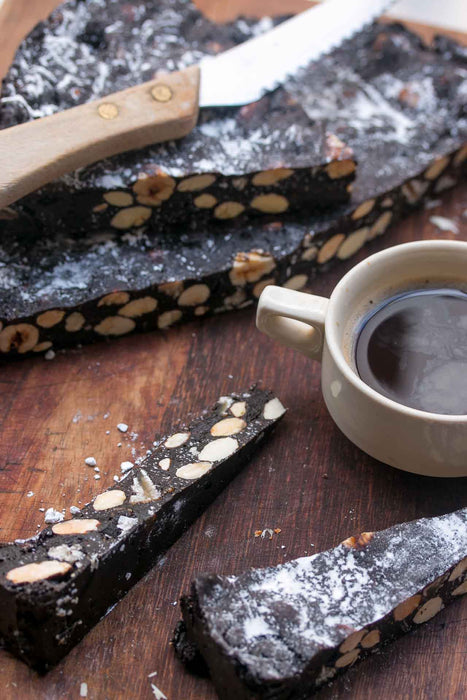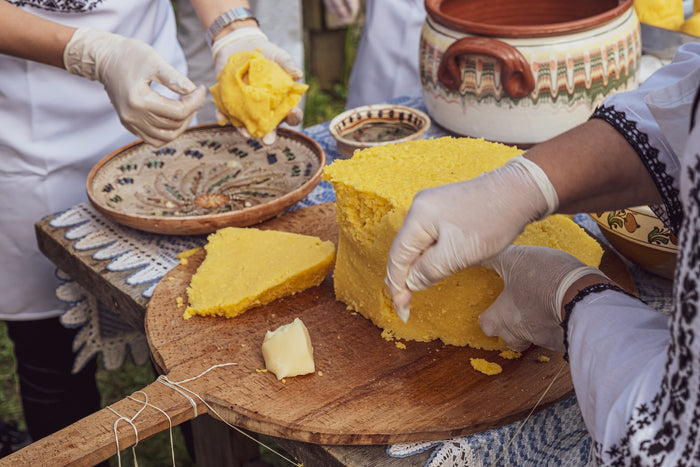Italian Quadratini: Bite-Sized Delights of Italy
When it comes to iconic Italian foods, most people immediately think of pasta, pizza, gelato, or espresso. However, there's a lesser-known gem that deserves the spotlight: Italian quadratini. These delightful bite-sized treats are a testament to the creativity and craftsmanship of Italian confectioners.
Italian quadratini are small, square-shaped cookies that come in a variety of flavors and textures. They are often enjoyed as a sweet snack or paired with a cup of coffee or tea. These little squares pack a big punch of flavor and have become a beloved treat both in Italy and around the world.
One of the most famous brands of quadratini is Loacker, a family-owned company that has been producing these delectable cookies for over 90 years. Loacker quadratini are made with the finest ingredients, including real Italian hazelnuts, cocoa, vanilla, and more. Each bite offers a perfect balance of sweetness and crunch, making them irresistible to anyone with a sweet tooth.
The appeal of quadratini lies not only in their delicious taste but also in their versatility. They come in a wide range of flavors, from classic vanilla and cocoa to more adventurous options like coconut, espresso, and lemon. This variety ensures that there's a quadratini to suit every palate and mood. Whether you're craving something rich and chocolatey or something light and refreshing, there's a quadratini for you.
Italian quadratini are not just a delightful treat; they also hold cultural significance. They are a symbol of the Italian passion for food and the art of indulgence. In Italy, food is more than just sustenance; it's a celebration of life and a way to bring people together. Quadratini embody this spirit, inviting us to slow down, savor the moment, and enjoy the simple pleasures that life has to offer.
Next time you're in the mood for a sweet indulgence or want to experience a taste of Italy, reach for a pack of Italian quadratini. Whether you choose the classic flavors or venture into new territory, these bite-sized delights are sure to satisfy your cravings and transport you to the heart of Italy. Buon appetito!
Italian quadratini are small, square-shaped cookies that come in a variety of flavors and textures. They are often enjoyed as a sweet snack or paired with a cup of coffee or tea. These little squares pack a big punch of flavor and have become a beloved treat both in Italy and around the world.
One of the most famous brands of quadratini is Loacker, a family-owned company that has been producing these delectable cookies for over 90 years. Loacker quadratini are made with the finest ingredients, including real Italian hazelnuts, cocoa, vanilla, and more. Each bite offers a perfect balance of sweetness and crunch, making them irresistible to anyone with a sweet tooth.
The appeal of quadratini lies not only in their delicious taste but also in their versatility. They come in a wide range of flavors, from classic vanilla and cocoa to more adventurous options like coconut, espresso, and lemon. This variety ensures that there's a quadratini to suit every palate and mood. Whether you're craving something rich and chocolatey or something light and refreshing, there's a quadratini for you.
Italian quadratini are not just a delightful treat; they also hold cultural significance. They are a symbol of the Italian passion for food and the art of indulgence. In Italy, food is more than just sustenance; it's a celebration of life and a way to bring people together. Quadratini embody this spirit, inviting us to slow down, savor the moment, and enjoy the simple pleasures that life has to offer.
Next time you're in the mood for a sweet indulgence or want to experience a taste of Italy, reach for a pack of Italian quadratini. Whether you choose the classic flavors or venture into new territory, these bite-sized delights are sure to satisfy your cravings and transport you to the heart of Italy. Buon appetito!



